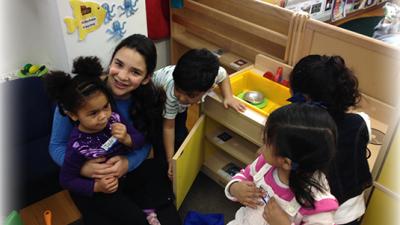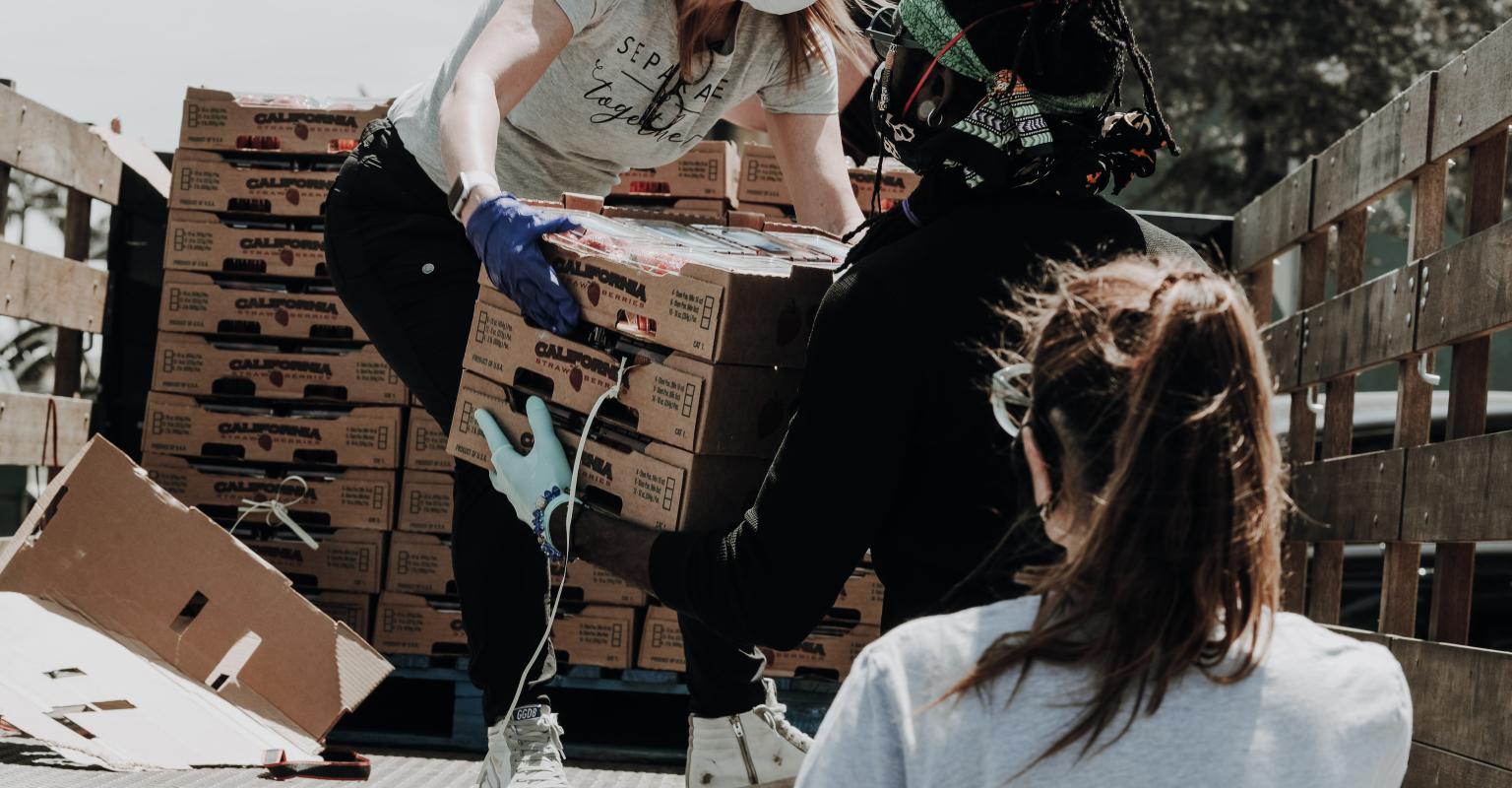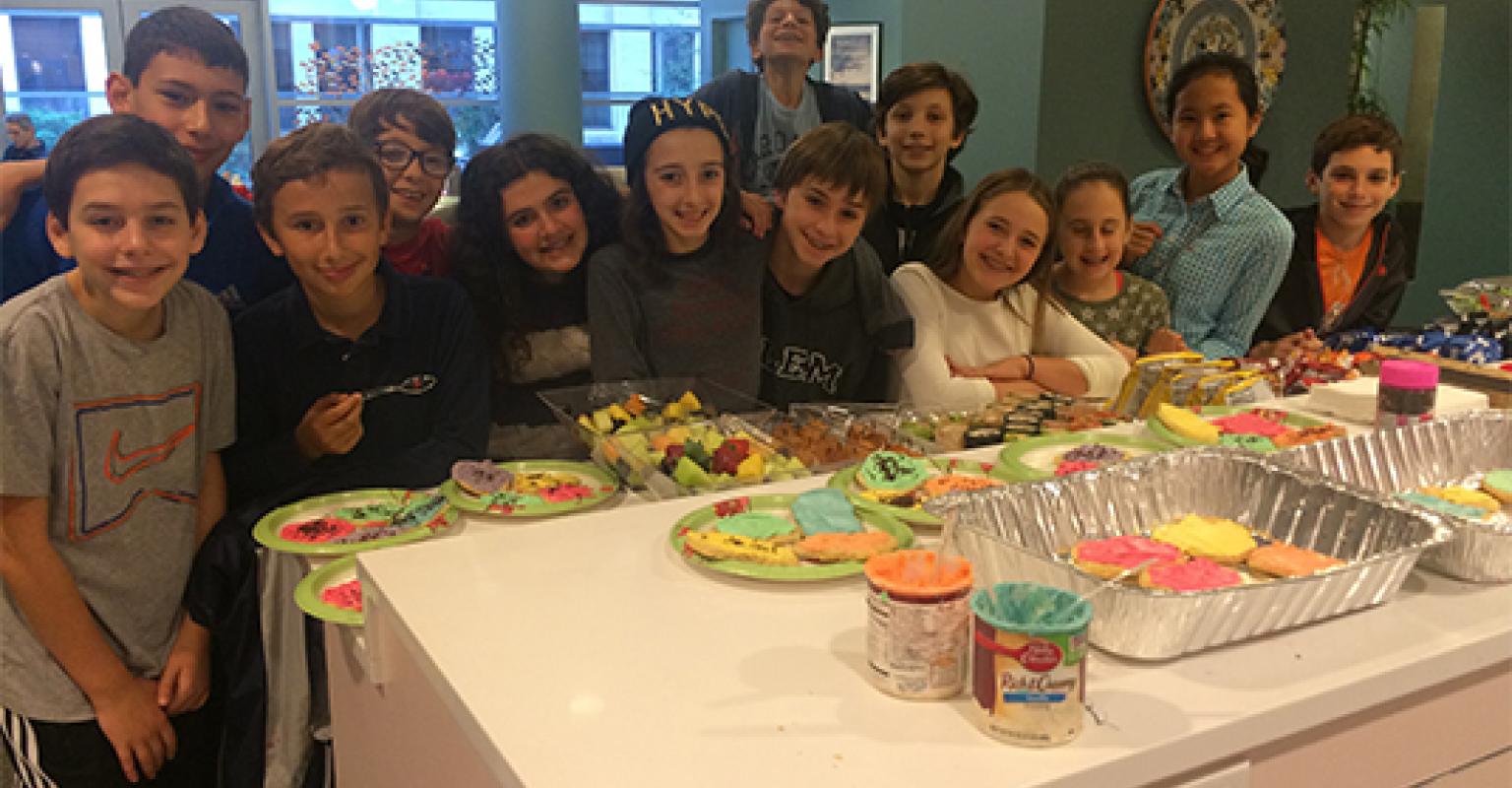Service Learning Model: Lirdof Tzedek (To Pursue Justice)
Congregation Emanu-El of NYC, New York City

Model description adapted from The Express Innovation Guidebook, 2011.
Model Summary:
(Lirdof) Tzedek League is a hands-on learning model for all 8th-grade students at Congregational Emanu-El of the City of New York. During Sunday seminars, which are held monthly, learners explore different ways of doing social justice including fundraising and philanthropy, community organizing, and advocacy. Learners volunteer on-site once each month for an organization selected by the 8th graders. Learners are encouraged to keep a journal of their volunteer experiences giving them an opportunity for reflection that enables them to make meaning of their experience.
Who are the Learners?
-
8th-grade students
-
Parents attend an initial seminar with their children
Who are the Educators/Learning Facilitators?
-
Coordinator of Youth and Young Adult Learning and one other teacher
-
Staff from the organization students choose to work within a given year
- The Coordinator of Youth and Young Adult Learning and one other teacher work with the 7th grade as well, providing continuity between 7th and 8th-grade learning experiences.
When Does the Learning Happen?
-
Sunday seminars, one Sunday afternoon a month, during the school year, from 4:00-6:30 pm
-
Volunteer sessions, one weekday afternoon a month, during the school year, from 4:00-6:30 pm
-
Teaching session, one Sunday morning in January
-
Friday night dinner in May to honor all students participating in service-learning
-
While students are required to attend the monthly volunteer sessions, they may also make arrangements to volunteer additional hours on their own.
Where Does the Learning Happen?
-
Sunday seminars and teaching sessions meet at the congregation.
-
Friday night dinner is also held at the congregation
-
Weekday volunteer sessions meet off-site at the service organization, this year at ABC.
What is the Learning? How is it Designed?
-
During Sunday seminars, learners explore different ways of doing social justice including fundraising and philanthropy, community organizing, and advocacy.
-
Learners engage in interactive text study to explore the Jewish context for these approaches to social justice.
-
Sunday seminars also provide learners with an opportunity to plan how to utilize their time most effectively during the volunteer sessions.
-
Learners volunteer with one organization, vs. multiple organizations, during the year.
-
During volunteer sessions, learners organize games, help children with homework, and share some of their own passions, such as sports or music, with the children at ABC.
-
Learners are encouraged to keep a journal of their volunteer experiences.
-
Learners also spend one or two Sunday seminars developing a teaching session for 7th-grade Mitzvah Corps kids to prepare them for their visit to ABC. (Note: A description of Mitzvah Corp is in the collection of models documented by the Coalition of Innovating Congregations in 2014.)
- Throughout the learning in Lirdof Tzedek, the teachers incorporate group-building techniques to connect the learners to one another on multiple levels. In a safe learning environment, the 8th graders discover what is most important to them in the realm of social justice and consider how best to pursue it.
What Were You Trying to Achieve with this Model?
-
To teach learners about social justice and their role in it
-
For students to learn the real-life skills needed to pursue social justice including advocacy, community organizing, and fundraising
-
To enable learners to understand pursuing social justice as part of their Jewish identity; that it’s a way of expressing yourself as a Jewish person just as studying Torah or praying are ways to do so
-
To help the organization the learners choose to serve
Key First Steps and Recruitment Plan:
-
Mitzvah Corps and Lirdof Tzedek are presented as a two-year curriculum.
-
Personal phone calls to students entering 7th and 8th grades prove key in bringing them into the model.
-
Calendars for the program get distributed at the beginning of the year.
-
Lirdof Tzedek is preceded by the 7th-grade program, Mitzvah Corps. The process of study, action, and reflection in that model provides the learning necessary for Lirdof Tzedek.
-
Working with a variety of service organizations on a short-term basis allows the congregation to develop relationships with key people at each site.
-
It is important to identify a person at the social service agency to be the point person there.
Role of Governance and Clergy:
- At this point, no lay structure guides the design or implementation of the model.
Budget:
-
Teaching salaries come under the religious school budget.
-
Transportation costs depend on the location of the service organization. Note that in future years, parents may be enlisted to help with transportation.
-
Need to budget for the cost of additional supplies to use on-site if the organization doesn’t have the funding to provide them.
Relationship of Model to Congregational Learning System:
This is the program for 8th graders at the congregation. This year the students chose to work with ABC, the Association to Benefit Children in New York City. During one session, students invited family and friends to participate in order to expose them to ABC’s work and mission.
What is Inspiring about This Model?
-
Students express a richer understanding of their obligation to pursue justice in the world.
-
One student, in particular, came to truly appreciate all that he had in the world, which, he realized, was far more than most people. He was committed to helping his friends come to the same realization so that they could be inspired to pursue social justice as well.
- The congregation’s Tikkun Olam committee now supports the work of the Association to Benefit Children, following the lead of the learners in Lirdof Tzedek.
Additional Notes:
-
Learners decide where they want to volunteer on a regular basis during Lirdof Tzedek at the end of their year in Mitzvah Corps. They choose from among the sites connected to each of their units of study: Feeding the Hungry (a soup kitchen); Welcoming the Stranger (a homeless shelter); Respecting all Human Life (Special Olympics); Guarding the Earth (partnering with the Green Apple Corps); Teach Each Child According to Their Way (working in an afterschool daycare facility in Harlem - ABC); Respecting our Elders (working in a senior center); Taking Care of Animals (an animal shelter).
-
By engaging with only one organization during the year, learners have an opportunity to develop deeper relationships with the population it serves and a more nuanced understanding of the social justice issues it faces.
-
Learners sold raffle tickets at the congregational Purim Carnival to raise money for and awareness about ABC.
-
Learners came together to make a presentation to a city councilwoman to advocate around issues affecting the population served by ABC.
How Do You Describe Your Congregation?
Reform Congregation, member of the Union for Reform Judaism, 2500 member families, 4 full-time clergy, 2 rabbis emeriti, 2 interns, 5 full-time educators, 4 part-time educational staff, 17 faculty, 2 assistant teachers with a school of 239 students.
- Models-In-Action
- Social Justice
- Tzedakah
- After School and Beyond
- Congregational Learning
- Teen Engagement
- Educator Training
Discover more

In Service Learning Models the obligation to engage in tikkun olam, repairing the world, serves as the focal point for learning.

Congregation Emanu-El of the City of New York. Mitzvah Corps is a hands-on learning model for 7th-grade students with eight units based on ethical mitzvoth each with Learning, Action, and Reflection components.

This guide highlights b’nai mitzvah models developed throughout North America that can spark innovation.
